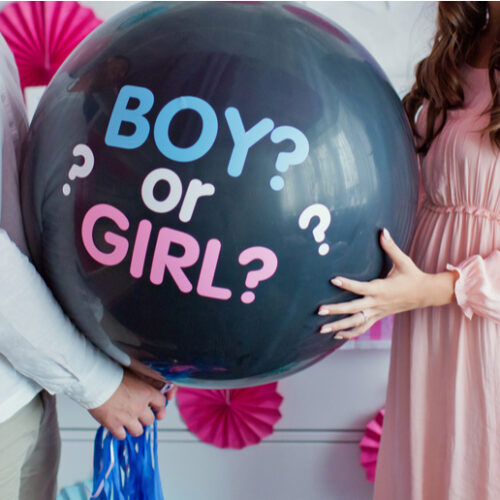The seven core signs to teach your baby
 Sign language is an incredibly useful skill to teach your baby. Let’s take a look!
Sign language is an incredibly useful skill to teach your baby. Let’s take a look!
Though it has been around for years at this stage, baby sign language is still an underappreciated method for communicating with your little one. As babies move through the phases of sounding everything out, understanding what they actually want can become confusing. Baby sign language is a way to clear up this communication while your child is still learning how to speak. It enables them to tell you how they’re feeling and ask for something they need, while hopefully avoiding the feelings of distress (and the accompanying tears) when they can’t get their message across.
Frustration is one of the main reasons that babies burst into tears and begin to wail. Many parents report a reduction in flare-ups and tantrums when they incorporate baby sign language into their household. Similarly, lots of mothers feel more in control when using signs, as they can truly understand how their little one is feeling, instead of trying to decipher a barrage of cries. Sign language is obviously not to be relied on forever but it provides a foundational approach to interacting with your child, especially while they’re still getting to grips with speech.
Baby sign language is based on traditional sign language, with the focus being on words that are relevant to young children. Some parents fear that using sign language will stunt their little one’s development but the evidence points to the contrary. Research suggests that children who learn to communicate in this way often start to speak earlier than their counterparts.
Getting started
A great time to introduce your baby to signing is just after they reach six months of age. This is an exciting milestone and marks a big step in their development. It is around this age that most children become more interested in communicating with others, and so it’s the perfect time to equip them with the tools to do so.
Start slowly
Teach your baby no more than a couple of signs at one time – otherwise they may get overwhelmed and confused. Once they are able to communicate using one or two signs, then you can progress and introduce another one. This steady, staged approach will keep challenging your baby while giving them ample time to learn this new skill.
In order to actually teach your little one a new sign, you need to perform the sign yourself while repeating its meaning verbally. When a suitable situation arises, and there is context for you to communicate this new sign, slowly perform the gesture and say the accompanying word or phrase clearly. Do so a few times to help cement the connection between the sign and the statement.
Practice makes perfect
Remember, this is a process that requires patience. It might take six months for your baby to absorb this information and begin to sign back to you. At first, they may not quite get the motion right, or produce a jumble of two or three signs at once. Gentle encouragement and perseverance will enable your little one to sign clearly to you, opening up a channel of communication that can make figuring out your baby’s needs a whole lot easier!
Seven core signs
With all of this in mind, let’s take a look at the main signs you can teach your little one to help them express their thoughts and feelings to you.
Love
There might not be anything as pure as a baby’s love. Without words, it can be difficult for little ones to express this powerful emotion. The sign for love is a heartwarming one that you can easily teach to your child. Clench your fists and cross your arms over your chest so that your right fist is resting on your left collarbone, and your left fist is resting on your right collarbone. Finally, squeeze and shrug your shoulders as if you’re giving yourself a hug.
Pick me up
Babies often want to be picked up, whether it is for some cuddle time or simply because they want to get out of their seat for a change of scenery. Signing ‘pick me up’ is very straightforward – just hold one hand in front of you and point up. It can be difficult to discern if your child is happy where they are or if they want to be lifted up and held. This sign will help them to communicate this need to you.
Play
Play time is the best time! The sign for play might seem familiar, as it’s one that is synonymous with surfing and Hawaiian culture. Extend the thumb and the little finger of both hands and shake your hands forwards twice, almost as if you’re shaking water from them. To teach your baby this fun sign, perform it each time you say “Let’s play!” or something similar. Soon, they’ll be signing it back to you when they want to play.
Milk
Knowing when your little one is beginning to get hungry can feel like a parental superpower. Teaching your baby the sign for milk will help them to let you know that they’re hungry before the tears come. This is an easy, one-handed sign where you clench your fist in front of you, as if you’re milking a cow or squeezing a ball. It’s not unusual for babies to learn this sign a little more quickly than the others as it’s simple and comes with the immediate reward of being fed!
More
Teaching your baby how to sign ‘more’ will help you to understand their appetite and how much play time they need among other things. Imagine how difficult life would be if you couldn’t express how much of something you wanted, and if it was entirely in someone else’s control. To perform the sign for ‘more’, bring all four fingers to meet the tip of your thumb on each hand. Then turn your hands to face each other and gently tap them together. Babies may initially struggle with this sign due to a lack of dexterity, and it may look like they’re clapping but that’s okay. You’ll understand what they mean and they will get the hang of it before long.
Change diaper
‘Change diaper’ is perhaps the most complex of these core signs. However, babies tend to be pretty quick to learn it as they want to get out of their dirty diaper as soon as possible. Each time you change your baby, show them this sign as well as saying ‘I’m going to change your diaper.’ They will soon associate the action, the statement and the sign, and they will eventually be able to sign it to you when they need to be changed. To perform this sign, hold your right hand in a fist, palm facing upwards, with your index finger partially extended, almost like a hook. Make the same shape with your left hand, and place it facing down on top of your right fist. Then swap the position of your two hands so that your left fist is on the bottom facing upwards and your right fist is on top.
All done
Similar to ‘more’, learning how to express ‘all done’ is a hugely helpful skill for babies. For parents, it’s so reassuring to know that their little one is finished with an activity or has eaten enough food before moving them on from it. To let you know that they’re ‘all done’ your baby will have to hold both hands in front of themselves, with their palms facing their chest. Then, they will flick their hands around so that their palms face you.
A worthy investment
Baby sign language is an excellent skill for you to teach your little one. Not only will it enable them to communicate more clearly with you, it will reduce the amount of frustration they feel from being misunderstood. As with all good things, it takes time, patience and practice but it will certainly result in your precious baby being able to express themselves better and it’ll contribute to a more harmonious home.
Image Credit: Shutterstock












Comments